Summer Reading
The Joys of a Trashy Fashion Novel
I hope that sometime this summer you can take at least a few days of total relaxation—whether that’s on your couch, by a pool, at a beach, or wherever makes you most zen. If you (like me) enjoy settling in with the trashiest of novels, I’ve made a list of some fashion-and-beauty-related trashy novels for you to enjoy that go beyond the obvious Collins and Krantz bonkbusters (not that Scruples isn’t my favourite ever).
When I started to go through my thousands of books to pull together a trashy novel recommendation newsletter, I realized that I had far too many to feature and that some kind of delineation was necessary. I decided on novels written by fashion and beauty insiders—fashion designers, publishers, gossip columnists, and beauty writers fictionalizing the worlds that they lived and worked in for decades. Most are roman à clefs that will have you pondering who is based on who (is this character Estée? Or Helena???) throughout. These aren’t high art or well-written literature—they are gossipy, frothy nonsense somewhat based on reality. For all that is fantastic, there is enough true detail and knowledge about the beauty and fashion worlds (from the fifties through the eighties) to ensure they are an engaging read for all interested in this era. All of these books I found out about through my favourite past-time: reading old magazines (of which I have thousands) cover-to-cover, then rabbit-holing any books reviewed or in ads—buying them on eBay, reading any articles I can find, and so on. Immersive reading + obsessive collecting.
The last on the list is an outlier—likely written under a pseudonym, it does not knowingly fulfill the insider novelist requirement but it’s so campy and over-the-top that I wanted to throw it in. Let me know if you are interested in similar lists for trashy memoirs, non-fiction, or other fiction themes (Hollywood, etc.) While I believe it is important to read more serious literature and the news, sometimes you just need a little escapism—order one of these on eBay, throw on a swimsuit and some sunblock and go read in the sunshine.
The Value of Nothing (1970) John Weitz
John Weitz is definitely worthy of a deeper dive on this newsletter soon. The Cliff’s Notes: Raised in Weimer-era Berlin, Weitz grew up with celebrities like Marlene Dietrich as frequent visitors to his house. Educated at boarding schools in Britain, Weitz studied at Oxford for one year at age 15 before apprenticing with Molyneux in Paris for a year. When war broke out, the Jewish Weitz traveled to Shanghai to meet up with his escaping parents—eventually, the family emigrated to New York. From 1943 to 1946, Weitz was in the OSS—he was part of a 1944 mission that planned to assassinate Hitler, and he also liberated Dachau. With the help of his first wife’s parents (who owned Blauner’s department stores in Pennsylvania), he started John Weitz Juniors, Inc. to make women’s dresses and sportswear. In 1964, he shifted to menswear, where he truly made his mark. The clothes were classic and very American—perfectly suited to the kind of life he lived: one of race car driving and yachting, of glamorous wives (the second was fashion editor Eve Orton, third actress Susan Kohner), and of big business. One of the early adopters of licensing, he used his glamorous image and handsome face to sell a multitude of products—I own a set of John Weitz steak knives! According to the dust jacket, at the time of publication there were John Weitz boutiques in Paris, London, and “more than a dozen other European cities, and 120 department stores from New York to Chicago to Los Angeles and San Francisco, where John Weitz clothes were sold.”
Weitz started writing after some prodding from his best friend John Steinbeck—the two would breakfast together every Saturday morning in the then-sleepy Sag Harbor, where Weitz would regale Steinbeck with tart observations on society’s goddesses and the newest jet setters in town. They would then people watch, spinning yarns about anyone who walked past—Steinbeck relayed later that “Weitz could whip up a better storyline on the spur of the moment” than he could. After much prodding, Weitz began spending Thursday through Sunday writing non-stop for three years (time made possible by his copious store accounts and licenses). While Weitz’s later books focused on Nazi Germany (both in novel and non-fiction form), his first novel is all fashion. Charting the rise of Philip Ross from nobody to the heights of fashion, it’s a novel about power, glamour and sex—and was highly controversial at the time for its depictions of using gay sex to get ahead. With one reviewer describing it as “unrelieved sordid tastelessness,” The Value of Nothing concentrates on exposing the myths and phoniness of the fashion world Weitz was part of. Many questioned who his scheming protagonist was based on—the gossip columns alighting on several similarities with Bill Blass, and then reporting a feud developing between the designers, which Blass had to deny.
Paris One (1977) James Brady
James Brady is another who deserves a longer discussion. After being a Marine in the Korean War, he started working for Fairchild Publications in 1956, first as a business reporter covering Capitol Hill. He then became Women's Wear Daily's London bureau chief (’58-’60), Paris bureau chief (’60- ‘62), European director (’62-’64), before becoming editorial director and publisher from ‘64 to 1971. Brady joined Harper’s Bazaar briefly as editor and publisher, from which he was fired after ten issues for trying to modernize it and make it appealing to younger readers. Brady then wrote New York magazine’s Intelligencer column and hosted a spinoff TV talk show New York: Live, before becoming vice chairman of the Murdoch newspaper enterprises. When Murdoch bought the New York Post, Brady became editor—she was responsible for launching the legendary “Page Six” column. In 1976 Murdoch bought New York magazine in a hostile takeover, installing Brady as editor there.
Weaving together all his years watching the fashion and celebrity worlds, Paris One was wisely described by one critic as “Mystery in Marrakesh! Passion in Paris! Duplicity in Delaware! This is a bit of fluff, bitingly conceived, that might just blow you away this summer.” When a Parisian couturier dies in Morocco, he leaves behind a fanatically religious widow, a dissolute daughter, and a legal and financial mess. A New York merchant bank dispatches one of their men to lay claim to their part of the mess, leading to lots of sex, intrigue, espionage and violence. Look out for lots of name-dropping and barely disguised fashion characters. In the words of another reviewer, it is “thoroughly entertaining and free from any literary merit.”
Crystal Clear (1978) Eugenia Sheppard & Earl Blackwell
From a 1981 Town & Country profile: “Earl Blackwell: master of the mega-party and gentleman guide of aspirants up the social ladder. Eugenia Sheppard: celebrity chronicler extraordinaire, whose avidly read column, syndicated in eighty newspapers daily, inventively fuses fashion and fashionables. Together they chart the rises and falls of instant stars, grand achievers and longers after the limelight. Indefatigable party people themselves, Earl and Eugenia—both hovering around their seventh decades—attend at least three parties every night and occasionally entertain in Earl’s muraled ballroom in the 57th Street penthouse palazzo, where they were captured (below) in a singularly tender moment.”
What happens when a legendary fashion writer and a celebrity tracker get together? They write gossipy novels about the intertwining worlds of celebrity, beauty and fashion. Eugenia Sheppard was the writer of the syndicated column, Inside Fashion, which made her the most influential fashion journalist of the 1950s and 60s. Earl Blackwell founded Celebrity Service (later The Celebrity Bulletin)—almost single-handedly creating the gossip industry. As a team, they wrote two novels—Crystal Clear and Skyrocket (1980). Their first explored the life of Crystal Young, from child in Nazi Germany to Fifth Avenue cosmetics tycoon (via very unscrupulous methods). Sheppard and Blackwell spent a year traveling to the Bahamas each weekend to write, hashing together all the knowledge they had picked up in four decades of following the “Beautiful People.” In the fashion gossip columns that Sheppard and Blackwell had laid the groundwork for (like WWD’s Eye), much was made about the similarities between their central character, Crystal, and famous enemies Helena Rubinstein and Estée Lauder.
Faces (1989) Shirley Lord
For more on Shirley Lord, listen to my interview with her on my podcast Sighs & Whispers (also on Apple, Spotify, and Stitcher). A short bio I wrote last year: “Shirley Lord is a journalist, beauty editor and expert, and novelist, who rose from working-class Cockney lass to one of the most influential people in the beauty industry through grit, good humor, and a passion for journalism. A features editor for a British women’s magazine by age 24, three years later she married the carpet tycoon Cyril Lord. Weaving easily between high-class entertaining and a high-powered career, Shirley worked for British Harper’s Bazaar and the Evening Standard in London before leaving her marriage in the early 1970s to move to New York. After a stint as beauty director of Harper’s Bazaar, she became beauty editor of Vogue—a job that she would have in some capacity for most of the next 40 years, only leaving briefly to be vice president of Helena Rubinstein. In the 1980s she married Abe Rosenthal, the legendary editor of the New York Times—they were together until his death in 2011. Shirley Lord has written two beauty books as well as several novels drawing on her deep knowledge of the glamorous fashion and beauty industries.”
When I spoke with Lord, she said that she started writing novels when she saw her friend Eugenia Sheppard do so—she realized that she was quite as capable, so began devoting her weekends to creating. Shirley has written five trashy novels—the first, Golden Hill, came out in 1982 and is based on her time living in the tropics with her carpet magnate second husband. All deal with beauty, fashion and the jet-set—i.e. the world Lord has lived in since the 1950s. My personal favourite is Faces, a novel about plastic surgery gone wrong. Through her work as beauty director at Vogue, Lord became knowledgeable about all aspects of the beauty industry—and was also exposed to the lengths women would go to beautify themselves. I wouldn’t recommend reading it while recovering from a surgery, and if you are debating whether to get a fox lift or an acid peel this will likely make your stomach turn—but at its base, Faces shows just how little we’ve advanced in wider beauty standards in thirty years.
The Collection (1970) Paulo Montano
A Roman couturier decides to showcase his latest collection at the Guggenheim Museum in New York and travels to America with his retinue: a kinky business manager, an effeminate personal assistant, and six models from all over the world. What could possibly go wrong? If you prefer your beach reads with some murder and mayhem woven through then I highly recommend this early 70s written potboiler, where intrigue (in the industry and in the bedroom) is the counterpoint to lush fashion descriptions. I have not been able to find out anything about Paulo Montano other than that he later wrote a similar novel about the Vatican, so I believe it is a pseudonym.
Happy reading! Comment below if you are interested in more recommendations—non-fiction, showbiz novels, etc. I will be back very soon with some longer deep dives.
-Laura xxx







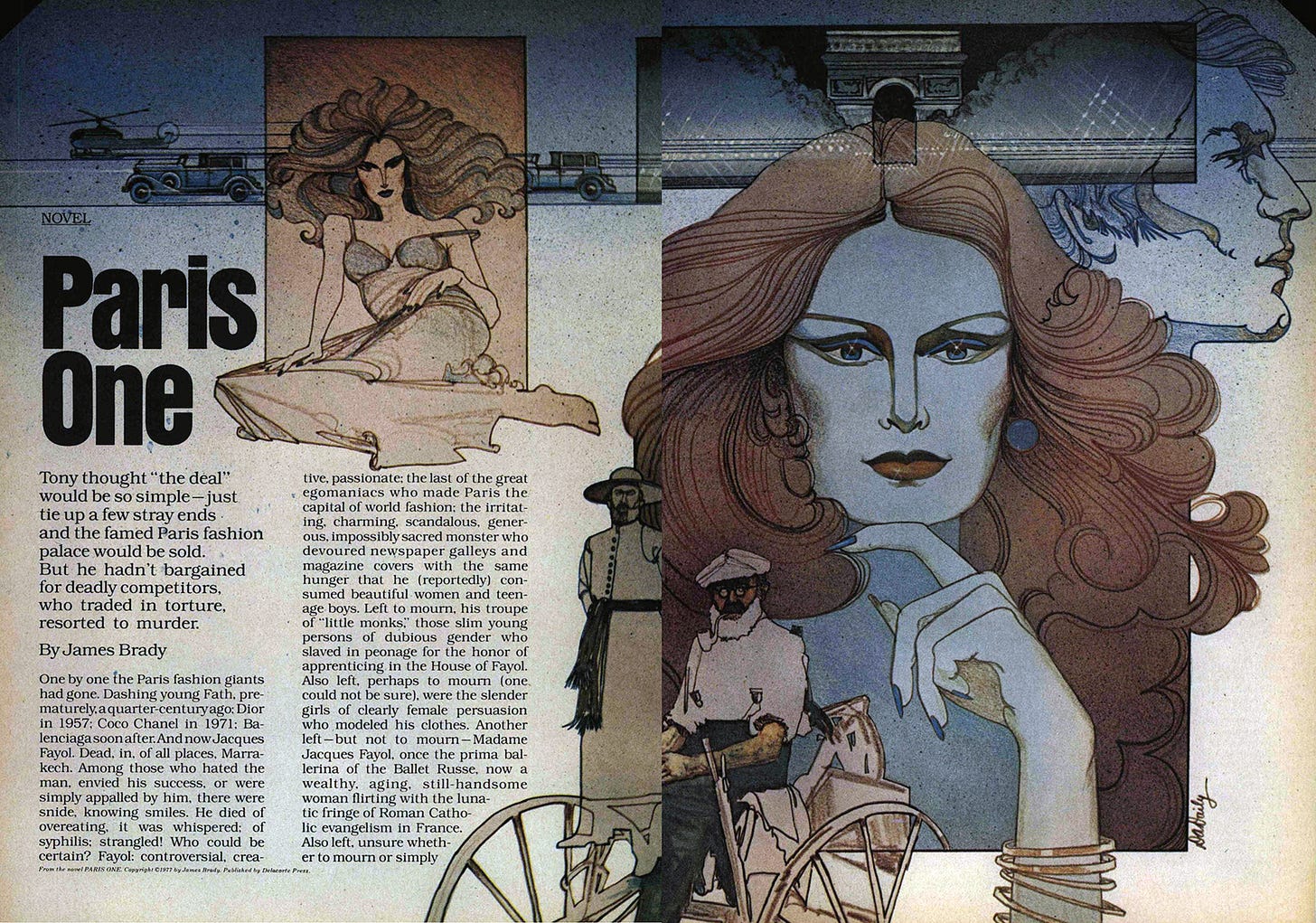
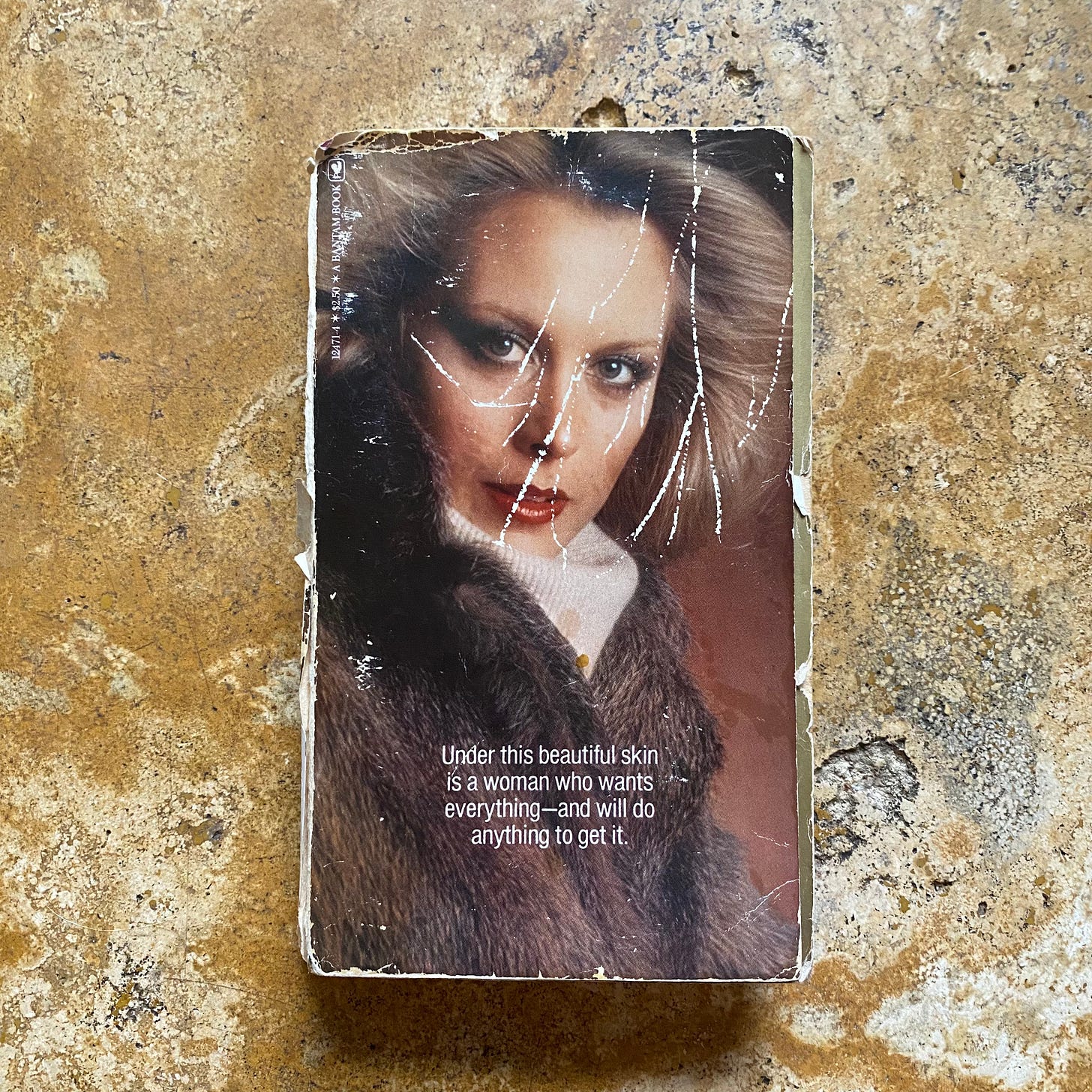
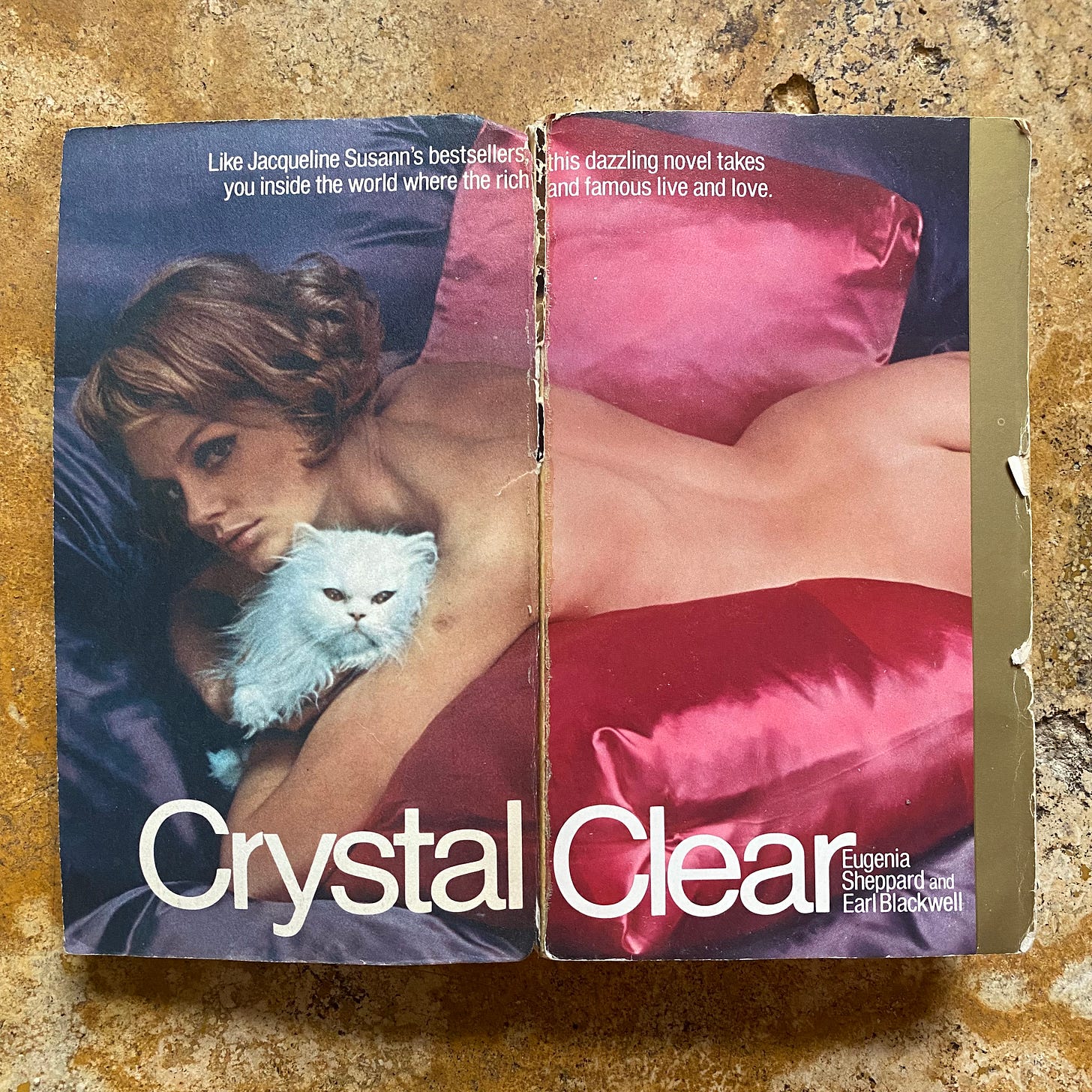
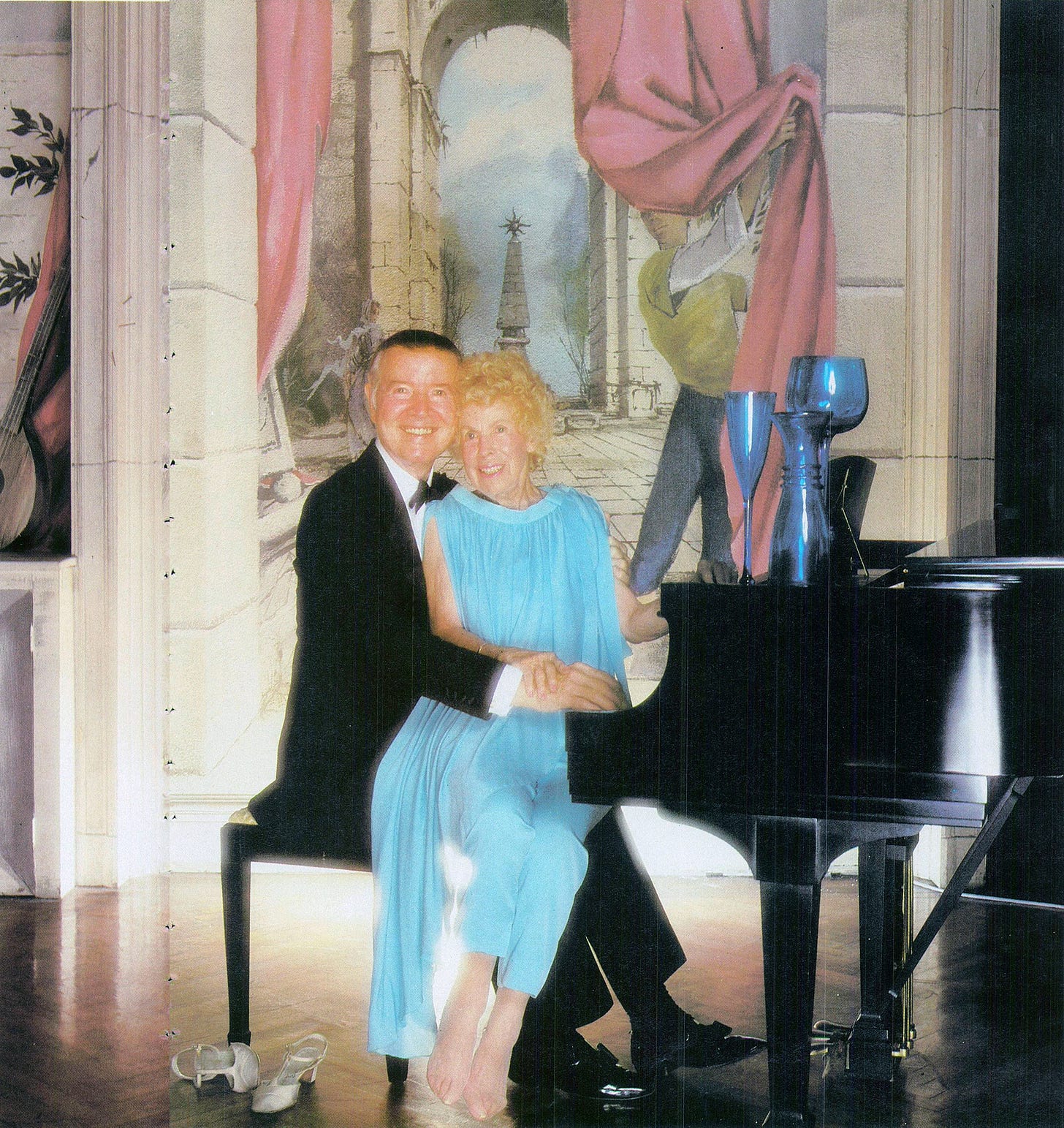

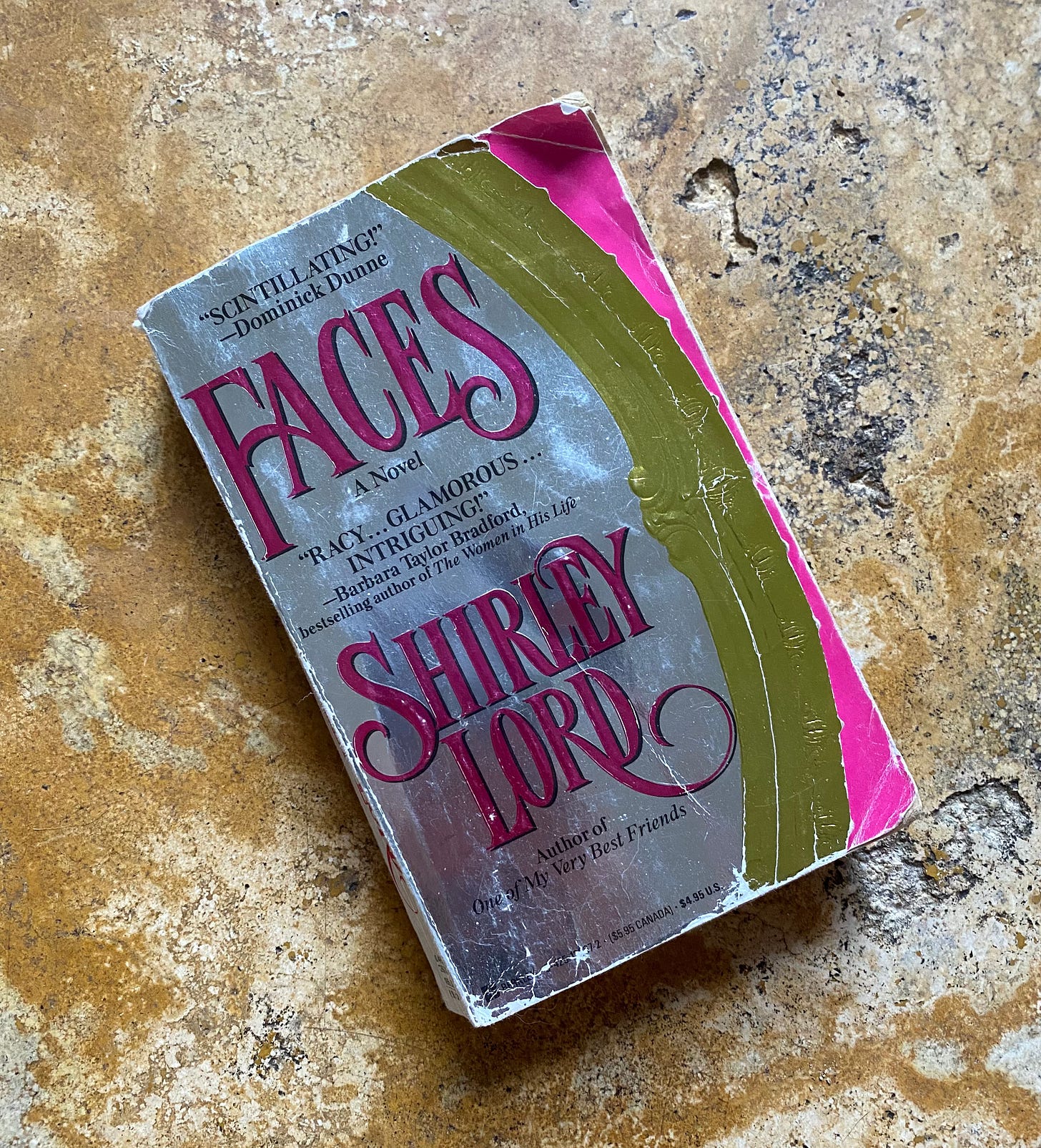


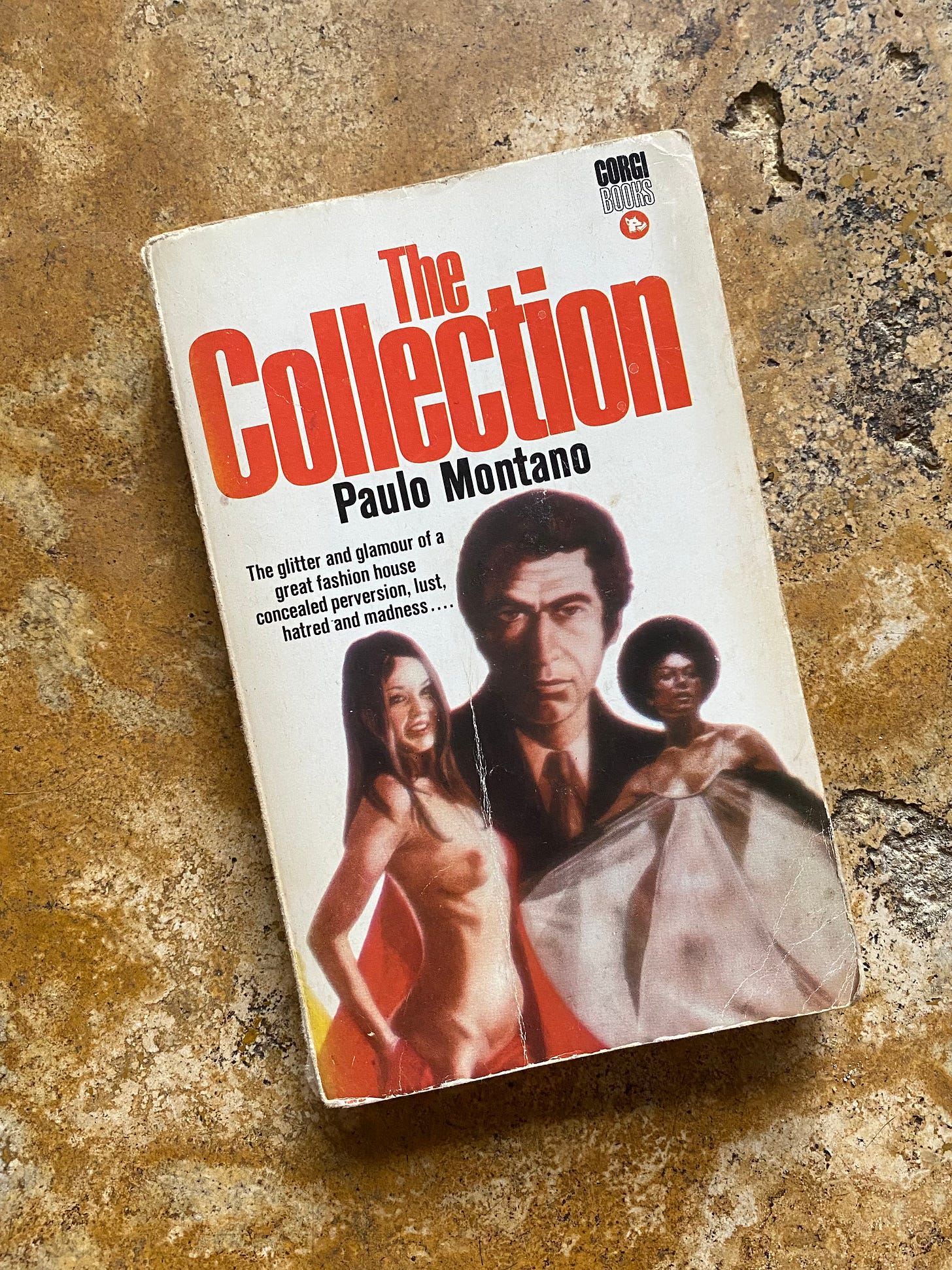
I was so intrigued by the artist for that Paris One excerpt, I tried to track them down. It looks like it was done by Don Daily (1940-2002). The signature here for another work he did for Cosmopolitan confirms it: https://tinyurl.com/2pvwzwmk Most of what’s online about him is his work as a children’s book illustrator, but the illustration you posted is SO similar to the art for the movie poster for The Driver (1978), which is attributed to an “M. Daily.” That’s what prompted my rabbit hole; I wonder if there’s a connection. Great article as always and I’ll be checking out these books!